

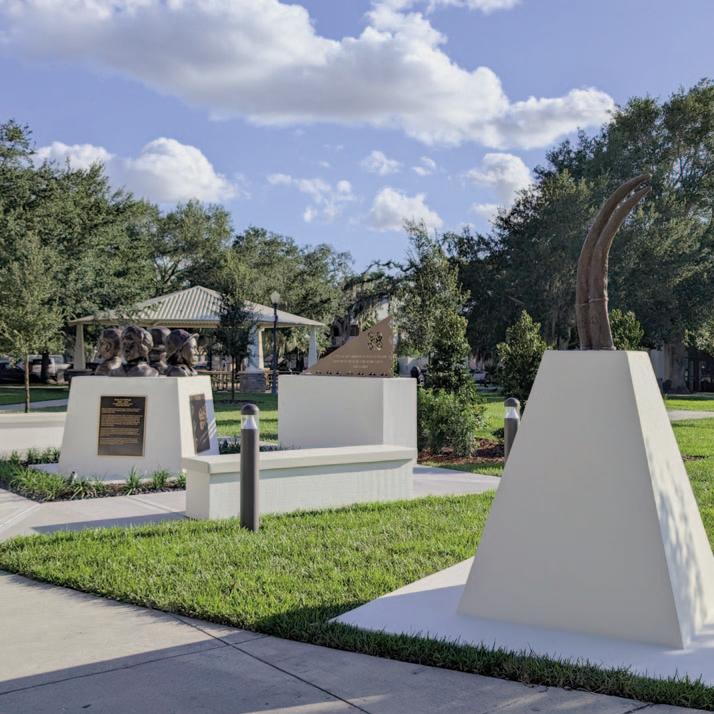

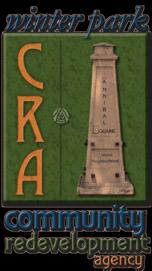
REPORT fiscal year 2024
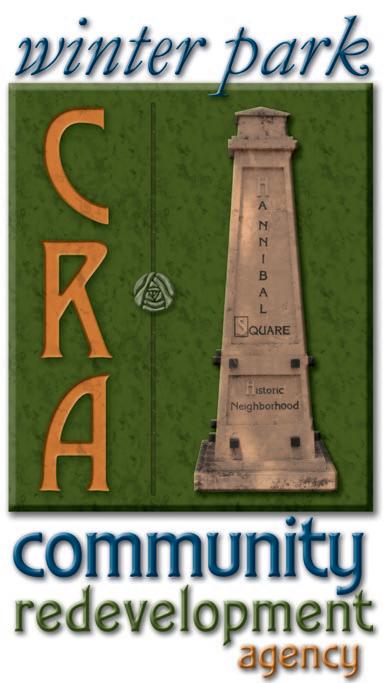
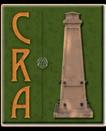

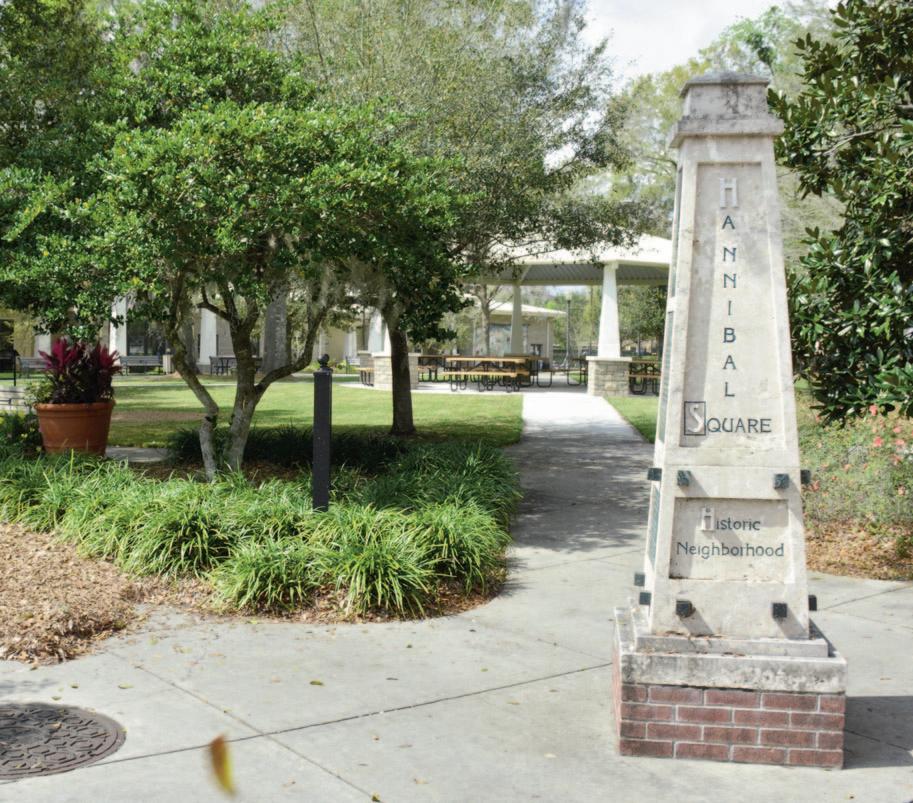







REPORT fiscal year 2024






To preserve and improve the residential viability and livability of the neighborhoods within the Community Redevelopment Agency (CRA) district by encouraging and initiating activities which empower residents to effect change and to enhance and improve the commercial areas of the CRA by encouraging and implementing activities that promote economic growth.
The Winter Park CRA is guided by a CRA Plan. The CRA Plan is designed to explore the critical factors that have shaped Winter Park and to identify opportunities to create a quality environment for residents and businesses. The CRA Plan has been the foundation for establishing and defining the vision and mission for revitalizing the Winter Park CRA district. The CRA Plan and the CRA Plan Amendments were adopted in August 1994, February 1999, and calendar years 2023 and 2024.
4,000





Since 1994, the Community Redevelopment Agency (CRA) has played an integral role in the removal of blight and adding value to the downtown area and surrounding community. Established initially in the central business district and historic Westside neighborhood of Winter Park, the CRA expanded its boundaries in 1999 to include the U.S. Highway 17-92 corridor. In 2023, the CRA, in cooperation with Orange County and the City of Orlando, was expanded further down the West Fairbanks corridor, representing another 23% in total area.
The CRA encompasses 11% of the city’s land area, has approximately 12% of the residential population, and contains over 55% of all businesses in the City of Winter Park.
The CRA fulfills its goals by investing tax increment financing (TIF) revenues into capital improvements, incentive programs, and offering numerous initiatives to meet the needs of the community that it serves. The Agency receives increment revenue from both the city and county for the area it encompasses.

In 1994, the CRA’s taxable value of all properties was $194 million. In 2024, that value has increased to over $1.4 billion. This represents a 10.4% percent increase from the prior year, or over a 400% lifetime growth in the district. Taxable valuations for CRA properties have shown positive growth over the past year. This has allowed the CRA to further leverage increment revenue to execute successful projects and programming for the overall improvements of the district.
The CRA once again has been effective in achieving its goals set out by the CRA plan.
The 1994, 1999 and 2023 plans articulate several overarching goals relating to economic vitality, transportation and stormwater infrastructure, community development, public safety, business, property value, communication and housing.


The CRA adopts a Capital Improvement Plan (CIP) to assist board members and the public on the understanding of where and when the CRA prioritizes projects. This practice has resulted in highly visible streetscape improvements, business and community programs, housing, facilities, and parks projects. This also provides for the designs on Orlando and New York avenues. Current buildout of the CIP is scheduled through 2027. The extension and expansion of the CRA will allow the CIP to be updated annually to 2037. This included several projects for this past year including work on parks improvements, streetscape designs, improvements to history and culture, and others. All of which will be discussed in greater detail within this report.
Fiscal Year (FY) 23-24 continued the long effort by the community, staff, and boards to partner with Orange County on a CRA extension. Through a cooperative process that included a significant number of public meetings, review by the public, advisory board, Agency, and public, the CRA was successful in its request. Ultimately, this provides a tremendous opportunity for the district to continue programming and support the area through capital projects.
Designs were completed for a new Community Playground at Martin Luther King, Jr. (MLK) Park with several productive community meetings, resulting in valuable input to the design. In addition to the new playground design, there will be a Unity Corner memorial which will include a larger-than-life bronze likeness of Dr. Martin Luther King Jr., an installation titled Ripples. It will also feature a memorial wall recognizing the individuals that once lived on the current site of MLK Park. This installation has been the result of significant community input and direction.

Work was also completed on the Pioneer Memorial, an art and history installation in Shady Park, in the heart of Hannibal Square, telling the story of the important role the African American community played in the early days and incorporation of Winter Park.
In addition to the playground improvements, work began on some much-needed traffic improvements on Denning, Webster and Fairbanks avenues. Support was also provided to the community in several forms including entrepreneurship and business mentoring. Support was started in FY23-24 and continues to carry through to the next fiscal year.
As part of this CIP, there are several projects highlighted in the ‘Projects’ and ‘Programs’ section of the report. During FY23-24, the CRA staff identified in total of nine projects (Downtown Enhancements, CRA and MLK Park Improvements, etc.) begun or completed, 11 categorized programs managed, and an additional three significant initiatives in development. These initiatives include working with stakeholder groups, are already in capital project design, or have been contracted for execution. Projects, programs and initiatives are ongoing and can sometimes take several years (this includes enough money to execute a project). This means funds for projects may carry over to ensure (1) total expenditure of CRA fund dollars; (2) develop a fully collaborated project; or (3) be redesigned or reconsidered. To that end, total expenditure of the trust fund may not equal the total value of the projects described. Total expenditure from the redevelopment trust fund on projects only is estimated at $1,574,819. Total value for all projects at full implementation is valued at $7,019,004.

The CRA is committed to maintaining and creating programs that will accomplish both the continued implementation of its redevelopment plans, and address some of the immediate needs for businesses, property owners and residents. Copies of the CRA Plan, previous annual reports, and recent updates can all be found on the city’s official website at cityofwinterpark.org/cra.
The projects and programs highlighted in this report have been outlined in adopted redevelopment plans and are guided by a volunteer advisory board that makes recommendations to the Community Redevelopment Agency Board.

The Board consists of the Mayor and City Commissioners, as well as an appointed Orange County Commissioner Representative. They are the decision-making body.
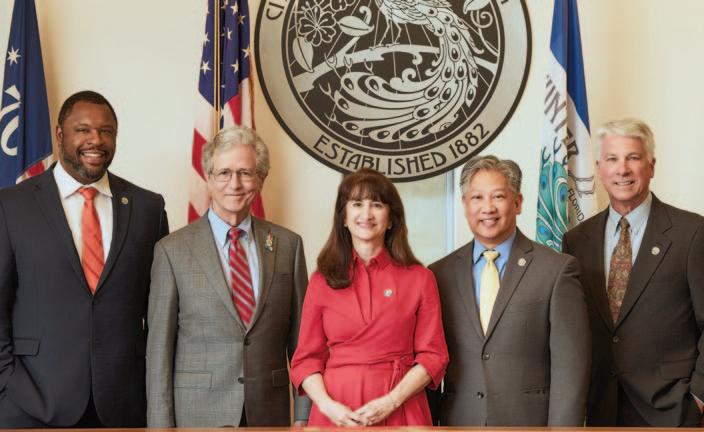

left to right ~ Commissioner Craig Russell, Commissioner Marty Sullivan, Mayor Sheila DeCiccio, Commissioner Kris Cruzada and Commissioner Todd Weaver not pictured ~ Orange County Representative Hal George

The Advisory Board is an up-to seven-member volunteer committee made up of residents and business owners appointed by the Mayor and City Commission. City staff works with the CRA Board and Community Redevelopment Advisory Board to carry out the CRA Plan.


board members ~ Michael Pearlman, Jay R. Trent, Carlos M. Benitez, Lindsay Eriksson and Carl E. Creasman Jr. not pictured ~ Pragasen Ramiah



city staff ~ Assistant Director Kyle Dudgeon; CRA/ED Coordinator Anne Sallee and Director Peter Moore
not pictured ~ Streetscape Attendants Barry Carson, Conor Schudel and Mike Stiff

The City retained GAI/CSG to perform an in-depth analysis of potential Community Redevelopment Area (CRA) boundary modifications, and a potential 10-year extension of the operational period of the Community Redevelopment Agency to 2037 and to update the Community Redevelopment Plan. Staff along with the consultant have worked to provide exhaustive community outreach and meet statute requirements to this end. Community outreach elements include stakeholder interviews, a full website to collect questions, concerns, and ideas, a community workshop, advisory board and Agency meetings.
Statute requirements state any CRA must provide for new language to a CRA plan update, must also issue a new Finding of Necessity (FON) for any new area, and be consistent with the city's comprehensive plan. The plan itself highlights three major focus areas including affordable housing, environmental sustainability, and transportation safety. While these are primary agenda items, they do not comprehensively address all items in the CRA. As a result, the goals and strategies section of the plan augment the focus areas through seven different elements: administration, housing, community development and culture, economic development, public space amenities, public health and safety, and regulatory environment. Under each element is a set of goals, action strategies, projects, and activities. This provides the CRA clear objectives, but also allows for flexibility in the event of unknown circumstances in the future.
Lastly, the CRA plan language identifies the existing Future Land Use (FLU) and zoning codes as part of its compliance with the comprehensive plan. To that end, the plan is consistent and

provides thoughts for future consideration within it. More specifically, there are several policies in the comprehensive plan that speak explicitly to the development and execution of the city’s CRA plan:
Implement the CRA Plan. The City and Orange County shall partner in the execution of the CRA Plan as the Winter Park CRA Agency.
POLICY 1-4.3.1: CRA PLAN Coordinate and work with property owners and the development community to implement the intent of the CRA Plan and CRA strategic plan.
POLICY 1-4.3.2: CRA TAX INCREMENT FINANCING
The City’s responsibilities shall include serving as the catalyst for stimulating, marketing, and encouraging both public support and private participation. As part of its responsibilities for maintaining and improving the CRA tax increment financing program, the City shall monitor CRA property values. These responsibilities shall include annual review, update, and evaluation of the effectiveness of the tax increment financing program including the timely processing of information by the City and County to ensure that the best interests of the City are carried forth.
The City shall analyze and evaluate the creation of a Community Redevelopment Area (CRA) for all or portions of this West Fairbanks Planning Area.
With all items in compliance, the city requested its extension through December 31, 2027, and was successful in its request.

Community Redevelopment Agency (CRA) staff continued to follow the Capital Improvement Plan by finalizing design plans on New York Avenue. Running parallel to Park Avenue, the right of way has great potential at its intersections for enhanced pedestrian connectivity and beautification.The road is also unique as it has railroad crossings at two points providing for larger than normal intersections. Staff went through several iterations of proposed improvements ultimately leading to an efficient and fiscally responsible scope of work. This includes bump outs, midblock crossings, intersection improvements for bus and pedestrian travel, and an increase to the total number of on street parking spaces.
The project is split into two phases. The first phase was at the intersection of New York and Fairbanks avenues, with a large amount of funding dedicated to street light mast arms. This stage of the project is complete with substantial completion concluding in Fiscal Year 2023. The next phase included the intersections of New York and New England avenues as well as Welbourne Avenue and Morse Boulevard. This project is near completion, with only milling and paving remaining. The estimated total cost of both phases is $1 million.




The Community Redevelopment Agency (CRA) Plan amendment from 1999 makes several references to Martin Luther King, Jr. (MLK) Park including “Lake Island Park is a huge hidden asset.” It further discusses the need for improvements to the area such as lake edge enhancements, landscaping, signage, street trees, plantings, parking and stormwater improvements.
Included as part of its Capital Improvement Plan (CIP), the CRA identified the park as an area for reinvestment. In 2021, staff met with the Parks & Recreation Advisory Board and Community Redevelopment Advisory Board regarding new improvements to the park.
Financially, the CRA is anticipating a multi-year allocation within its current CIP towards MLK Park enhancements through Fiscal Year 2024. Currently, that is set at $6 million. In 2021, the Agency approved $625,000 for some of these improvements including fields, hardscape around the fields for future shade structure, sidewalks, sod, landscaping, and a memorial corner. Future allocations would fund enhancements including but not limited to, restrooms and picnic pavilion, playground, connectivity and pedestrian pathways, fencing, gates, entry gateways, features (to include a tribute to Dr. Martin Luther King Jr. and memorial wall for individuals who previously lived in the park space), signage, stormwater and lighting.
Final concept renderings were completed for an upgraded playground to add additional accessibility and safety features, a ground level water feature, and improve the overall appeal and value of the playground while retaining the Community Playground affectionately called

“Castle Park” in response to community input. A ground level water feature will be added to the existing playground.


Another addition to the park as the result of a great amount of community involvement will be a bronze likeness of Dr. Martin Luther King Jr., in an installation named Ripples. The project has been in planning for some time and when a committee was tasked with identifying naming opportunities to honor the memory and accomplishments of renowned 1964 Nobel Peace Prize winner Martin Luther King Jr., Lake Island Park was renamed Martin Luther King, Jr. Park by the City Commission.

In coordination with improvements to park space; Policy 7.3A of the 1994 CRA Plan states the Agency shall enhance public spaces. In addition, Policy 8.6D states open spaces shall be coordinated to provide a cohesive neighborhood.
Shady Park fills this role in the Hannibal Square neighborhood. Public process for the project included input by the residents, children, seniors, board members and community center program participants. Input was gathered via several mediums including NextDoor, Survey Monkey, written surveys, board and community meetings, door hangers, and signage on the future use of the park. Staff worked to integrate these thoughts into several key features. To that end, the installation of a historical art feature was proposed for display at the east end of the park.
The art installation which tells the story of the Hannibal Square community members who were key players in the incorporation of the city was procured, designed, and constructed with the support and guidance from the neighborhood. An installation celebration took place in August 2024, and the total CRA budget for the project was $300,000.


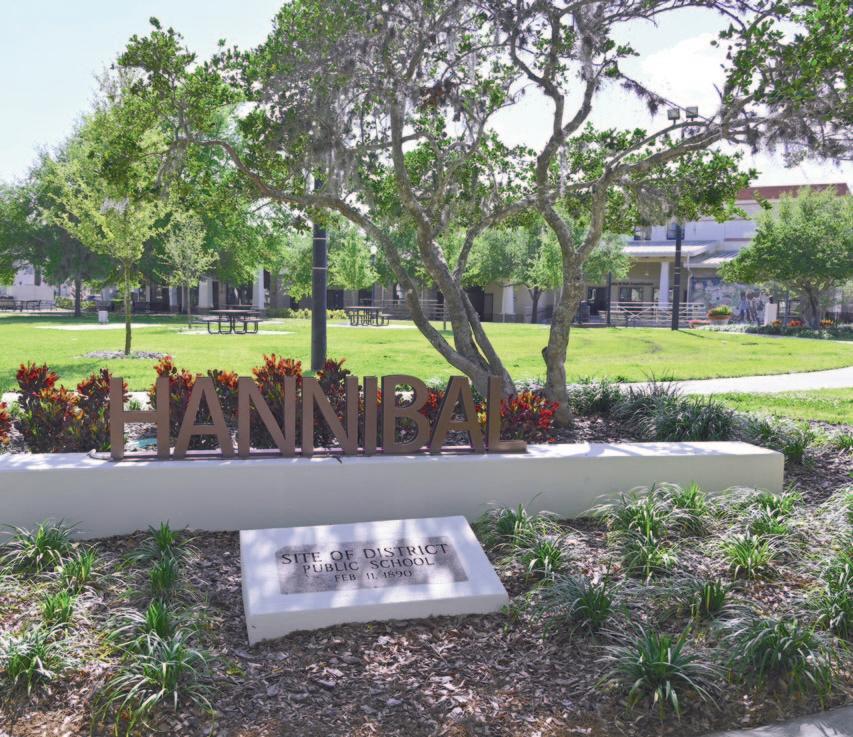



Continuing the work provided in FY2016-17, the Denning Drive rightsizing project has seen several benefits including the promotion of multimobility within the corridor, creation of buffer space between residential and commercial properties, sewing a closer pedestrian connection between MLK Park and Mead Botanical Garden, as well as safety enhancements (including installation of rapid rectangular flashing beacons [RRFB] for pedestrians to adjacent partnered parking facilities).
These improvements build on this critical infrastructure by extending multi-mobility north of Denning Drive and Webster Avenue by providing a mixed-use path to Solana Avenue and the northern boundary of the CRA. Construction showcases a 10-foot mixed-use path, 10-foot buffer space for shade trees, and two 10.5-foot vehicle lanes for traffic. The plan also contemplates a 6foot pedestrian crossing with RRFB north of Carver Street, and in close proximity to the existing driveway aprons and parking area for the Orange County Public Schools site. Total budget for the project was estimated at $500,000.

As a multi-year project including property acquisition, the CRA has successfully completed the extension of a southbound right turn lane at the intersection of Denning Drive and Fairbanks Avenue. The project provides traffic relief by installing a 120’ turn lane and alleviating congestion on Denning. In addition, the CRA is reviewing the remaining property space to augment and support public amenity improvements. Total estimated budget in FY24 was $647,215.
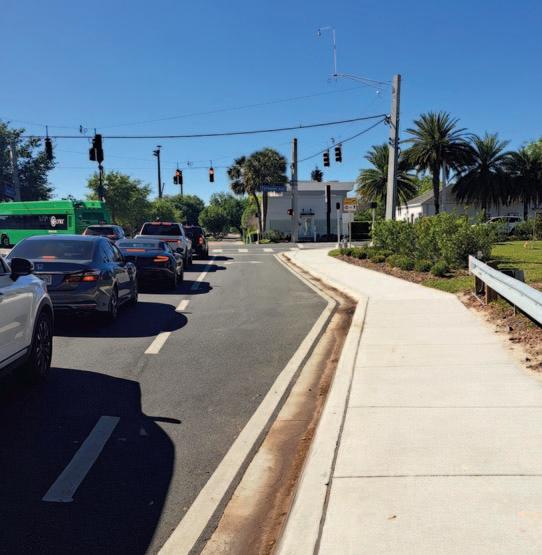


During this fiscal year, the Community Redevlopment Advisory Board and staff continue work to improve downtown.
Every year, the Community Redevlopment Agency (CRA) works with several departments including Parks & Recreation, Electric Utility, Public Works & Transporation, and the Facilities Managment Division, to identify opportunities to further improve its downtown. This includes the rehabilitation and refurbishment of trash cans, street lights, sidewalks, pressure washing, bricking enhancements, and more to provide a more updated aesthetic. CRA staff is committed to maximize the unique, but consistent look for the downtown that is unwavering with the districts charm and style. As part of its ongoing due diligence to respond to public requests, the Winter Park CRA incorpoartes opportunities for dissemination of information including this annual report, flyers showcasing projects and programs on physical and digital media platforms, along with community spaces.


The CRA also supported elevated levels of community policing within the CRA district, including weekly additional security details at key points in downtown. Total cost this fiscal year was $243,338.

Gateway features are a common reprise in the city’s CRA plans. Decorative features are often applied to intersections, or at the entrance of a commercial corridor to introduce a placemaking atmosphere and even lower traffic speeds. The Park Avenue gateways will bracket the city’s main street on the north and south ends, providing a sense of “I’ve arrived.” The project was also financially supported by residents suggesting even greater support at installation to match the contribution of the CRA. During FY24, approval of the project, design and construction documents were completed. Fabrication completion is anticipated for May 2024 with install roughly soon thereafter. Total cost to the CRA is estimated at $200,000.
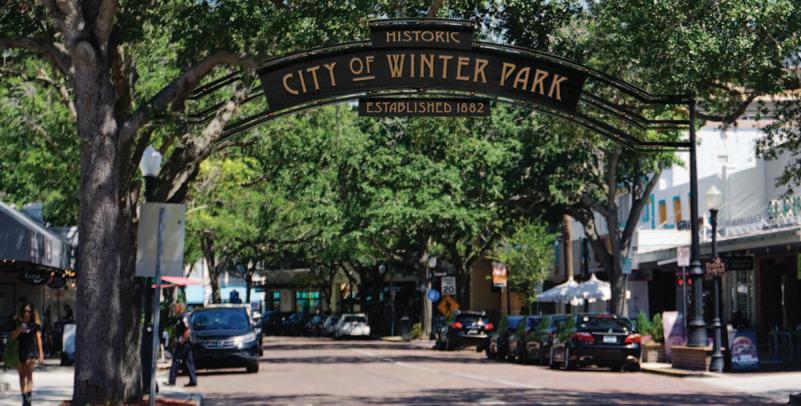


In addition to the CRA Plan’s Policy 7.3A and Policy 8.6D, Table 6-1 of the 1994 plan illustrates the Central Park area as eligible for increment financing funding. Staff engaged with a consultant for facility improvements in Central Park’s West Meadow with the intent to combine a need for restrooms; consolidation of Parks & Recreation equipment/storage; public safety/EMS space; and a more sound-covered area for events and operations. The floorplate shows an adjoining small pavilion space and a restroom/storage area. The total height of the project remains at a pedestrian scale, being reduced from 11 to 6 feet shorter than the main stage, which showcases a scale conducive to both passive and active uses. The style is consistent with the Winter Park Train Station and Central Park Main Stage, noting the same latticework, detail and charm.


Approved in December 2023, the project is currently underway with an anticipated completion in FY2025. Total estimated cost of the project is $1.2 million.

The CRA supports a number of initiatives devoted to improving the health, education and environment of the people and businesses it serves.
This program provides matching grant funds up to $20,000 toward exterior improvements to businesses within the CRA, supporting economic stability and maintaining the character and quality of commercial districts.
To date, the program has successfully leveraged 75 projects with a 13:1 ratio of private to public funds. Total funds spent in FY2024 was $40,901.



Programs under this designation are designed to ensure safety and maintain the character of residential neighborhoods by completing necessary rehabilitation work to distressed single-family homes. In Fiscal Year 2024, the Community Redevelopment Agency (CRA) spent $120,230.87 on total affordable housing projects. To date, approximately 148 homes have been improved through the Home Rehabilitation Program with over $1.9 million since its inception. Given the nature of pandemic related inflation, the CRA also discovered the need to reevaluate total project costs for each project and its ability to make an impact. Through work with the Community Redevelopment Advisory Board, staff raised the total amount for each successful applicant by 50%, from $20,000 to $30,000. Coupled with other affordable housing initiatives, that total rose to $3.9 million.
During the administration of the program, the priorities of expenditures started with safety improvements, which left a void in improving the aesthetic value of the home. Because of this, the Residential Driveway & Paint Programs were created. These programs focus on elevating the cosmetic, yet important aesthetics, by providing funds for driveway construction/rehabilitation as well as new paint for existing structures. Since inception, 37 homes have been supported with the upkeep and preservation of residential neighborhoods within the district.


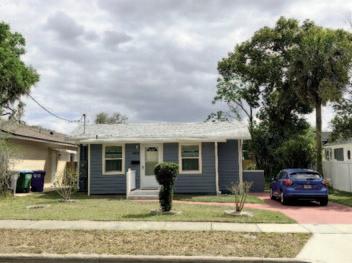

Project Cost IMPROVEMENTS INCLUDE general cleaning | painting
$19,263 exterior » pressure wash+ prime & paint+ wall repairs+ soffits



Project Cost IMPROVEMENTS INCLUDE $13,426 new patio slab | fence | exterior paint | pest control

The Community Redevelopment Agency (CRA) provides funding to a selection of community partners that promote community leadership, healthy lifestyles and learning activities.
Program selection is managed by a CRA partner – the city’s Parks & Recreation Department. It includes participation by over 52,000 resident and visitor interactions per year from senior to after-school programs. The CRA also supports the Annual Unity Heritage Festival.
The CRA, in partnership with numerous local nonprofit organizations, provides paid internships and local summer camp opportunities to CRA high school students. It focuses on providing realworld work experience while developing business etiquette skills to aid in future career success. The program has been accountable for 233 students during its lifetime, and several have found full time employment for the nonprofit in which they interned.

In December 2022, the Park Avenue Merchants were authorized by the State of Florida to become the city’s first Main Street Program, the Park Avenue District. A Main Street District is often formed to create, preserve and add value to downtown community cores to help them thrive. The CRA helped foster this idea through their first year with a matching grant in the amount of $50,000. The District was successful in surpassing it goals for first year fundraising and has provided a great benefit to the city, its merchants and guests.


The Community Redevelopment Agency (CRA) works in partnership with several community organizations also devoted to improving the health, education and environment of the people and businesses it serves. Over the past year, several initiatives were implemented to advance the CRA goals and improve the community’s quality of life.
The CRA provides monthly films in Central Park. The free and family-friendly event showcases films that are appropriate for all ages and include holiday classics. Popcorn Flicks in the Park encourages families and friends to gather and build community. It also helps promote economic viability by bringing foot traffic to shopping and dining areas.
The CRA provides funding for programming to the Winter Park Playhouse located on Orange Avenue. The purpose of the funds is to assist with the Playhouse’s programming for youth and elderly in the district as well as provide for free or reduced-price plays.




The CRA provides funding for programming and exhibits at the Hannibal Square Heritage Center which is managed by Crealdé School of Art. This year marks the 14th year of the Heritage Center including an acknowledgement by neighborhood residents providing recognition for those that understand the importance of this community asset.
Continuing to carry out the community side of the CRA plan, funding is provided to the Welbourne Avenue Nursery & Kindergarten for physical building improvements and assistance. The Nursery acts as a cornerstone for the district from youth to seniors.
Support for the social side of the CRA Plan is also carried out by The Gardens at Depugh Nursing Center. Funds are invested in the improvement of the building in order to provide additional capacity for CRA constituents.





